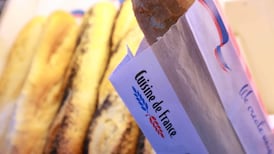LENDING institutions which offer interest rate incentives and discounts on first time borrowers on have been criticised in a major report on the housing market by the auctioneers Hooke and MacDonald and the Irish Mortgage Corporation.
The report argues that states it is "inconsistent" that attractive fixed interest rates are not available to existing customers on the same terms as are available to new borrowers. The net effect of this strategy is that incentives to new borrowers are being paid for by existing customers. The "new borrower" becomes an existing customer as soon as the initial incentive and incentive period runs out and hence is being discriminated against by nearly all lenders.
Acknowledging the high recruitment costs associated with new borrowers, the report suggests that existing customers be encouraged to remain on the lenders books by offering them a loyalty bonus, an interest rate reduction of a quarter per cent payable after five years.
The Hooke and MacDonald report examines all aspects of the new housing market, especially in the Dublin area. Aside from predicting a continuing shortage of new home developments in established suburban areas and continuing development in designated inner city areas of Dublin, it also looks at the lending situation in 1995 and makes a number of predictions for 1996.
The average borrowing for a new home on mortgage was £37,403. Borrowing far second hand homes was £38,280. A total of 19,330 new homes were sold in 1995 with mortgage loans worth £723 million, up from 1994 when 16,230 new homes were sold with mortgage loans of £580 million. In all, 48,118 homes were purchased in 1995, with mortgage loans of £1,825 million.
The strength of the market is apparent from another table which shows how 10 years ago only 10,233 new homes were sold with mortgages worth £228 million. The total number of homes sold that year was just 27,632: with mortgages of £619 million.
The building societies still account for the bulk of all mortgages at 51.1 per cent but this is down from 54.4 per cent in 1994. Meanwhile the banks now count for 38 per cent of all mortgage lending, up from 31.5 per cent in the previous year.
On the interest rate front, the report suggests that with international interest rates very close to bottoming out and a benign inflationary climate here, lenders are likely to offer five year fixed interest rates of under eight per cent which would be very attractive for borrowers.
According to the report very long term fixed contracts, that is those running for 10 years or for the full loan period may not be suitable for residential borrowers as the penalties attached to terminating such an arrangement are usually onerous. In December 1995, ICS Building Society re introduced a capped product. "We feel that a competitively priced five year capped product would also sell well in 1996," adds the report.









